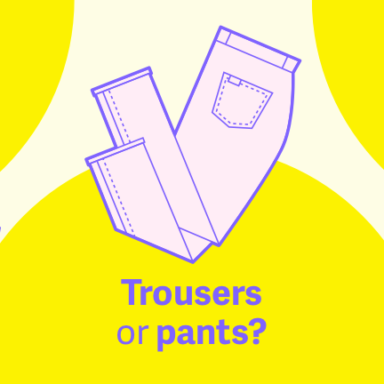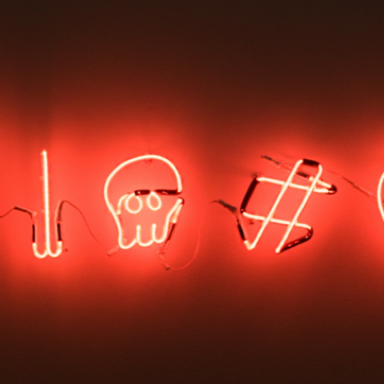Five tips for form design
Form design definitely isn’t a case of popping some questions onto the page and calling it a day. The slightest confusion can mean the difference between a form that’s completely correct, or dotted with errors.
You need clear questions, clear layout, and a clear flow. But how to get there?
Here are five tips for absolutely nailing your next form design.
1. Don’t confuse your audience
K. D. Lang said ‘You have to respect your audience. Without them, you’re essentially standing alone, singing to yourself.’
When it comes to form design, respecting your audience means understanding their needs and putting them first. It’s pretty likely that your customers are filling your forms in with some sort of time pressure — whether it’s joining you to start benefiting from your products, or making a claim on an insurance policy. So, you need to do the legwork to make the experience as simple as possible.
This starts, naturally, with the first page of the form and getting it right. It’s tempting to dive straight into the questions but you’ve got to give context first. Always make sure you’re answering these five key points in your upfront instructions:
- Who needs to fill in the form?
- Why should they complete it?
- What should they (not) fill in?
- How do they return it?
- What happens next?

2. Direct the traffic
Controversial Conservative leader Maggie Thatcher said ‘Standing in the middle of the road is very dangerous; you get knocked down by the traffic from both sides.’
While we’re pretty certain she was referencing political opinion rather than highway policies or form design, she has a point. A key component of an effective form is a logical flow. You need to support that with sectioning and visual routing that clearly sets out who needs to do what.
Start by establishing a form narrative (essentially, the information you’re looking to capture in an easy to follow order) and breaking it down into modular blocks that make sense to the reader.
Think of it as a workout: start with the basics to warm your user up. Ease them in by asking for their personal details and other stuff they know like the back of their hand. Next, build up to the questions that require a little more effort. At this point, they’ll be invested in the experience and ready for that extra push of in-depth responses that get them across the finish line.
3. Use the right tools for form design
According to Scottish philosopher Thomas Carlyle, ‘Man is a tool-using animal. Without tools he is nothing, with tools he is all.’ Moral of the story? Make sure you’re using the right tools for the job.
Too often, we see paper forms designed in Microsoft Word — resulting in a form filling experience that’s nothing short of a nightmare. Since forms need to function, they need the precision that professional software like InDesign provides. With the right programs, designers can create templates and establish rules for how things should look and feel within a single form as well as a suite.
This makes it easier for modules to be multiplied and applied consistently. And eliminates the pesky problem of moving things just one millimetre and throwing out the entire alignment of the document. Forms should act as an extension of your brand. You need to be able to use all your lovely colors, icons and elements without their quality being compromised.
And when it comes to the web, not taking advantage of the available functionality means you’re setting yourself and your customers up for a fall, right from the beginning. Being able to build in error validation and flag when fields haven’t been filled in — or haven’t been filled in correctly — you can get customers to self-correct so the responses they give you are right first time, saving precious processing time down the line.

4. Ensure brevity isn’t your enemy
Kofi Annan got it right: ‘knowledge is power and information is liberating’.
While a seemingly endless form is no one’s idea of fun, it’s important that your questions are given enough room to breathe. Cramming fields into a single sheet to save on print costs is likely to see your other overheads skyrocket as the complaints (or errors) come flooding in.
A form should act as a dialogue with appropriate cues and room for responses. Don’t shy away from spreading your content across the page. And if you’re worried about your customers losing steam when faced with a lengthy form, there are lots of things you can do to help push them through it:
- Use color-coding
This triggers the brain’s sensory receptors, dividing up the information and then ‘rewarding’ the person filling the form after they complete each section. - Include guidance at the point of need
So that your customers don’t have to dig out other documentation to explain what you’re asking for. - Use the right field types
These should outline the kind of information you’re looking for. Asking for a date? Use a comb box or provide a clickable calendar.

5. Add the finishing touches
The fabulous Marc Jacobs said: “To me, beauty and makeup and color is like the finishing touch on everything.”
You may not be designing a dress for J Lo, but you need to work it like you’re on the red carpet. Your form is still a part of your suite of communications and it needs to be on-brand. That’s why form design really matters. Simply sticking your logo at the top of page one or using the browser’s default display is doing your document (and your brand) a disservice.
By bringing in brand fonts (or web equivalents, if necessary), icons, colors, photographs and other assets, you can foster an even deeper connection with your customers. Because consistency is key to any long-term communication strategy, making sure that your transactional touchpoints fit into your brand should be top of your list.
 Let your forms act as an extension of your brand with fonts, iconography and color all playing their part
Let your forms act as an extension of your brand with fonts, iconography and color all playing their part
Finalising your form design
When you combine the strength of your brand with creative information design and simple, effective language, you can create first-class form designs.
With that, I’ll leave you with one last parting quote and some food for thought: American journalist H. Allen Smith once said, ‘the human animal differs from the lesser primates in his passion for lists.’















